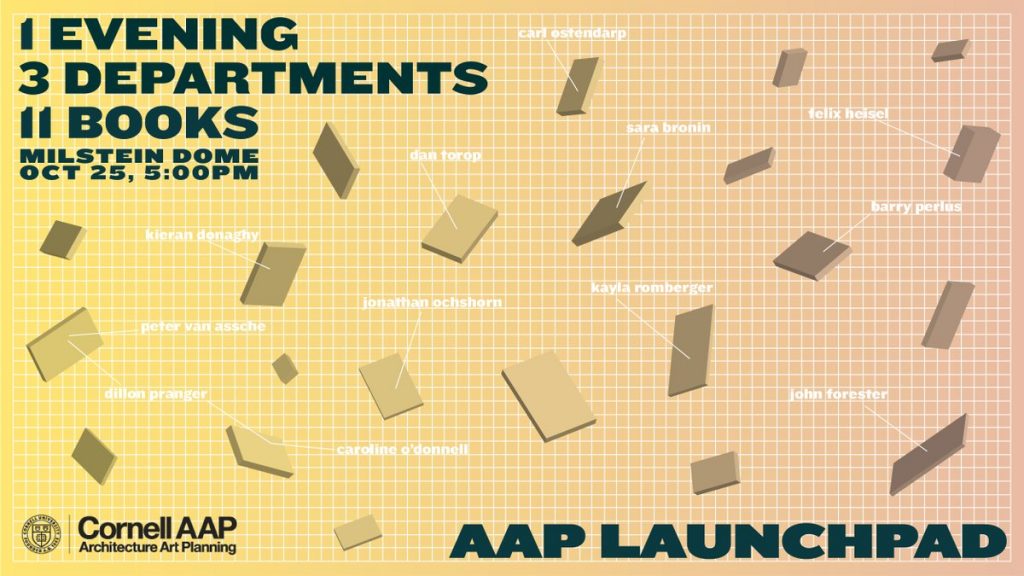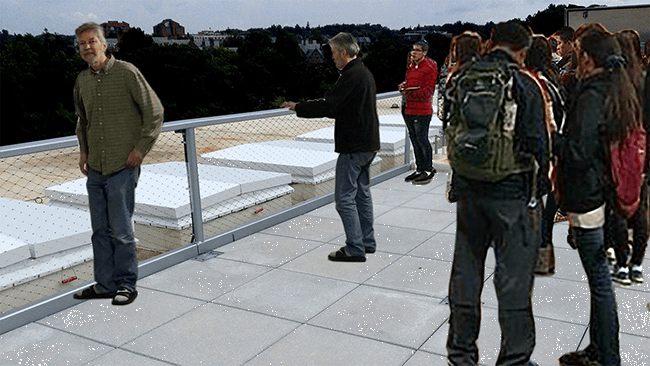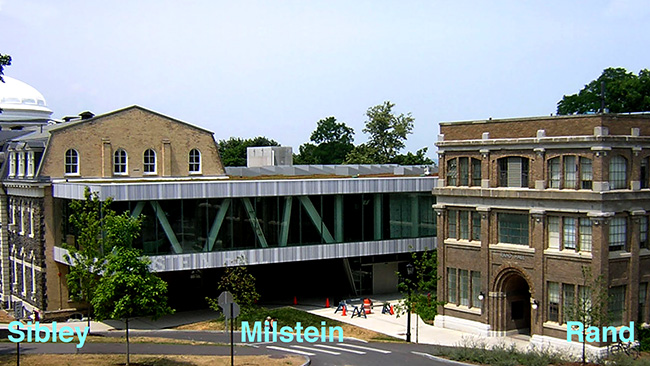
The Milstein Hall “dome” or “crit room” takes the form of a whispering gallery, where sound is projected, reflected, and reinforced in a surprising and dysfunctional manner, such that the utilitarian function of the space — to hold critiques, receptions, and other events — is compromised. This lack of attention to the acoustical quality of the space reflects the architects’ evolving ideology rooted in formal expression, abstracted from most utilitarian considerations. Aside from its acoustic shortcomings, the crit room was also designed and built with only a single compliant fire exit, even though its occupancy and floor area required three such exits. (Cornell was forced to provide these missing, but required, exits by literally cutting through a reinforced concrete and glass wall that had originally been designed to separate the crit room from the adjacent auditorium.)
Thus, Milstein Hall’s crit room — its “dome” — is a perfect example of a space in which architectural utility is doubly damaged: first by utilitarian dysfunction (inadequate exits) and second, by the competition driving dysfunctional expression (resulting, here, in an acoustical travesty).
It it therefore fittingly ironic that the AAP “Launchpad” event, in which my book — Building Bad — will be one of eleven AAP faculty books being “launched,” has been scheduled for Monday, Oct. 25, 2021, from 5:00 pm – 7:00 pm, precisely in this dysfunctional space. Faculty presenters were asked to prepare a 5-minute Pecha Kucha-style slide show, but I was given permission to show a 5-minute music video instead, based on a song that I wrote to celebrate the publication of my book.
I announce this with great trepidation, since there is no way to know how badly the acoustic qualities of the crit room space will mangle whatever musical qualities the song possesses. I therefore recommend that you not only attend the Launchpad event if you are in the Ithaca area (after all, there will be food and drinks served in that dark and abysmal space with the plastic bubbles that has been rebranded as the “Duane and Dalia Stiller Arcade” at 5:00 pm) but that you also check out my “Ballad of Building Bad” music video with headphones or an adequate sound system.





